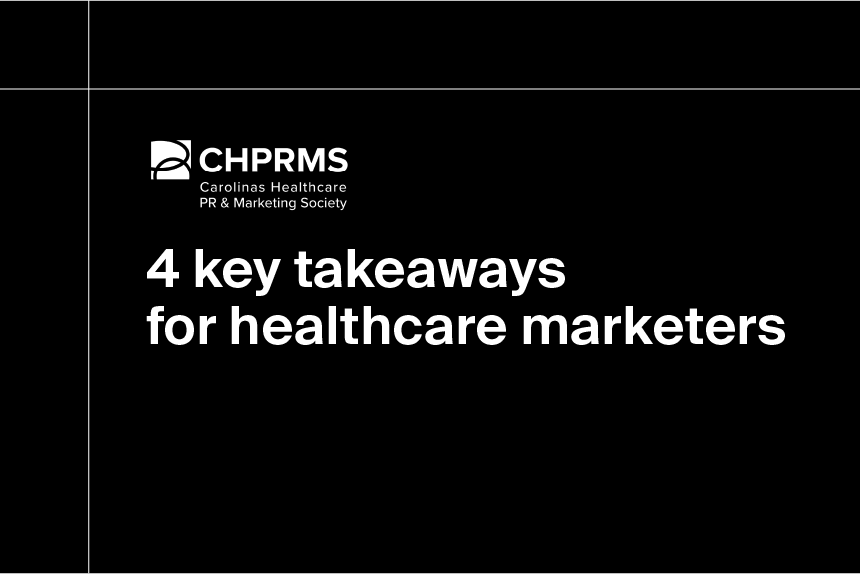Sharing real-world wins at HMPS24: How Henry Ford Health improved provider outreach
May 31st, 2024

All kinds of questions keep healthcare provider executives up at night, but there’s one particularly effective at inducing insomnia: How do we profitably grow and increase our market share?
If the C-suite isn’t sleeping, neither are the marketing and strategy teams responsible for answering those questions, and it can be tempting for everyone involved to look to standard solutions. Sometimes, however, out-of-the-box thinking delivers a bigger impact.
The typical solve for provider market expansion involves targeting and engaging providers with high volumes of relevant patients and procedures, with the goal of increasing their referrals to your network (or, in some cases, bringing them on as employees). This approach can work, but it tends to miss valuable prospects—or mistarget less-valuable ones—by fixating on referral volume as a singular metric.
At the 29th Healthcare Marketing and Physician Strategies (HMPS) Summit, Emilio Ruocco, vice president of provider and market solutions for Definitive Healthcare, joined members of Henry Ford Health to present a case study on an alternative method to volume-based provider targeting that helped the Detroit-based provider better inform their provider outreach programs.
Using Definitive Healthcare data, Henry Ford Health developed the “Mind the Gap” methodology of strategic analysis to rapidly transform executive vision into actionable insights for their physician business development team’s outreach efforts. Let’s see how it works by digging into the case study highlights.
Mind the Gap: A data-driven approach to identifying providers and growth opportunities
The Mind the Gap approach focuses on identifying providers who represent the greatest overall attainable opportunity for specific high value service lines.
Henry Ford Health started by organizing providers into three different groups:
- Providers to be prospected for growth in certain areas (i.e., service lines/specialties, specific markets, or procedure codes)
- Existing affiliate or employee providers for relationship maintenance to reduce patient outmigration
- Providers currently generally affiliated with another health system, but who represent an opportunity for additional referrals
With these groups established, Henry Ford Health determined through their own data science exercise which providers (say, 30-50 high value candidates) represented a real opportunity for growth.
To determine the final pool of providers for outreach, they combined healthcare claims data, provider and location reference and affiliations data, and insights from on-the-ground sources, like medical affairs personnel and affiliated physicians. This combined quantitative and qualitative intelligence helped them understand which providers were seeing key target patients, and if—and, if so, how intensely—they were really connected to Henry Ford Health specialist providers.
But all this raw data can contain plenty of noise: diagnoses, procedures, and other data points that may have no bearing on a provider’s opportunity value. A solid data framework helped find the signal in that noise.
Building the framework
Developing a data framework for service line growth (or facility, procedure, etc.) analyses should always be a collaboration between the outreach team and the service line leadership. Together, they can establish the key data points by which any prospective providers will be compared. While many of the factors listed below are commonly referenced in market analyses, Henry Ford Health was specifically interested in taking a different approach to the final item:
- Affiliation focus: Are the target physicians affiliated, unaffiliated, or employed—or some combination thereof?
- Geography: Which geographic markets are being targeted? Are different affiliation statuses targeted in different markets?
- Total number of providers to target: How big should the final pool be?
- Referring provider type: What specialties should be targeted?
- Type of referral: What kinds of procedures need a referral boost?
- Upper/lower referral targets: What percentage of a target provider’s referral volume is ideal? What is reasonably attainable? What’s the lowest acceptable referral volume among providers being targeted?
This data framework provides the keys to start understanding a market and its real opportunities. Consider, for instance, an organization focused on expanding referrals to its cardiology service line among already-affiliated physicians. Using a data framework like the one above, they could produce a list of all affiliated physicians referring for cardiology procedures in that market, paying close attention to current in-network referral rates. Physicians referring below the lower threshold may be filtered out of the list, leaving only those who fall within the target ranges.
The list can be broken down further by looking at where those referrals are going: When an organization’s affiliated providers refer to employed providers or affiliated providers within its facilities, that organization fully benefits from those relationships. But affiliated providers referring to other affiliated providers in competitors’ facilities present opportunities for growth.
After establishing its data framework and developing some high-level insights, Henry Ford Health sought to run a deeper analysis on “attainable” opportunity and more accurately identify high-value providers.
The difference between a provider’s loyalty to a competitor and their current alignment with Henry Ford Health was the opportunity gap for which the methodology was named. Quantifying this gap helped the organization’s outreach team identify targets and focus engagement, ultimately allowing them to seize additional market share.
Proving the methodology
Henry Ford Health’s analyst team initially worked with Definitive Healthcare’s claims data experts to develop and refine the data investigation and statistical calculation methodology to be used. Through this iterative process, they locked into an approach initially tested with key cardiology-related referrals.
Alongside the Henry Ford Health physician business development team, the analysts discussed and vetted the resulting target lists against the business development liaisons’ on-the-ground understanding of their markets. Their goal was to confirm if the confidence in the quantitative results matched, but also to potentially target new providers for engagement.
Initial results were validated, and with a high degree of confidence in their new list of target providers, Henry Ford Health began working on similar analyses for other key services such as cancer and neurosurgery.
Getting across the gap with open data
Referral analytics tools have been around for over a decade. So what makes Henry Ford Health’s use of our platform interesting enough to present at HMPS24?
Traditionally, referral analytics tools have been prescriptive in their referral methodology (usually a “black box” algorithm) and restrictive in their usage, often only offering a fixed user interface for exploring data.
The Definitive Healthcare platform offers a different approach—and, as Henry Ford Health found, a more useful set of results.
First, in our data, patient connections between providers are unrestricted. Referrals aren’t “confirmed” via algorithms or calculations that too often yield false positives or negatives. We simply show patients and any of the providers they’ve seen within a given a period of time.
These patient ”pathways” become a comprehensive and unrestricted starting point for further filtering and refinement based on the specific attributes of varying service lines. This allowed the Henry Ford Health analysts to filter and refine based on specific procedure or diagnosis codes, provider specialties or location types, patient attributes, and even the average length of time between two encounters.
Second, our data is delivered both in functional dashboards and staged in an accessible Google BigQuery database. This allowed Henry Ford Health to develop its own dashboards and directly query the database for only the specific data fields they felt they needed to develop their Mind the Gap opportunity calculations.
With direct access to unrestricted data, you can start closing the opportunity gap in your market also. Sign up for a proof-of-concept exercise today to see how Definitive Healthcare can help you with key market insights and more.
To learn more about how we worked with Henry Ford Health to achieve service line growth, check out our full presentation from HMPS24.



